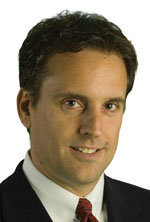Q&A
New Company, Same Energy: Q&A with Jeff McNaught, Dell's New Cloud Guy
When Dell Inc. acquired Wyse it became an end-to-end virtualization leader overnight, and Jeff McNaught is out to spread the word.
In the wake of Dell Inc. buying Wyse, Jeff McNaught became executive director, marketing and chief strategy officer, Cloud Client Computing. As a man of limitless imagination and energy, he hit the ground running once the Dell deal was done, and he hasn't looked back. Virtualization Review Editor in Chief Bruce Hoard interviewed McNaught recently about the post-merger environment.
VR: You guys bring a lot to the table for Dell.
McNaught: Even since you and I last met, we've introduced products across all three areas of the Wyse spectrum. Some of the most interesting things, though, are areas that you wouldn't expect. I don't know if you got a chance to hear about Wyse's Project Stratus technology?
VR: I know some, but tell me more.
McNaught: It's an interesting idea. It's really client infrastructure management from the cloud. It's in response to the millions and millions of licenses that we've sold of our thin client management solution, which is called Dell Wyse Device Manager. You know that's a heavyweight application. It's highly scalable to 100,000 simultaneously connected clients, and it's a big thing to install and maintain. The customers who buy it love it, but they hate getting it installed, so we wanted to build something that would do everything it did, but then a whole lot more -- and we wanted to make it so you never had to install it, you never had to upgrade it and you didn't have to maintain it. So Project Stratus is really that software.
 "The software in our 200-patent portfolio is way beyond anybody else's."
"The software in our 200-patent portfolio is way beyond anybody else's."
Jeff McNaught, Executive Director, Marketing and Chief Strategy Officer, Cloud Client Computing, Dell Inc.
VR: A lot has changed since last we spoke.
McNaught: At that point, I said we were cloud-ifying all of our software. Now here's the proof of that whole process, and this is just really slick, easy-to-use software, and it's all going to be delivered as a service based on a monthly fee per desktop. Very low numbers. Easy to afford. Really aimed at our entire spectrum of customers -- and, yes, this sort of technology is one of the reasons that Dell acquired us because it's one of those deal-making technologies that really pushes us ahead of our competitors in this space.
VR: What does this mean for virtual desktop infrastructure (VDI) as far as Dell's concerned? Doesn't this give the company the full, end-to-end VDI experience?
McNaught: It takes Dell from what some were thinking was a hobby for [the company] to leader in the market. If you look at Wyse when we were acquired -- we were the No. 1 brand in thin client, the No. 1 brand in zero client, and the software in our 200-patent portfolio is way beyond anybody else's.
The other thing they get with Wyse is a voracious 3,000-member channel that knows this technology.
VR: Have you moved into the unified communications space by supporting voice, video and data all from the cloud?
McNaught: Yes, and it's definitely an important story component, and that's because when people look at VDI, it's come so far since the last two, three, four years, that nearly every PC application plays very well in it now. So when you start to look for flaws in the VDI story, unified communications was one of those flaws. For example, you couldn't scale a unified communications deployment using Microsoft Lync or IBM Sametime or some of the other unified communications solutions that exist today.
What's changed is Wyse has worked very closely with a number of different vendors -- one of which is an OEM partner to this day -- to develop platform solutions that enable unified communications.
About the Author
Bruce Hoard is the new editor of Virtualization Review. Prior to taking this post, he was founding editor of Network World and spent 20 years as a freelance writer and editor in the IT industry.